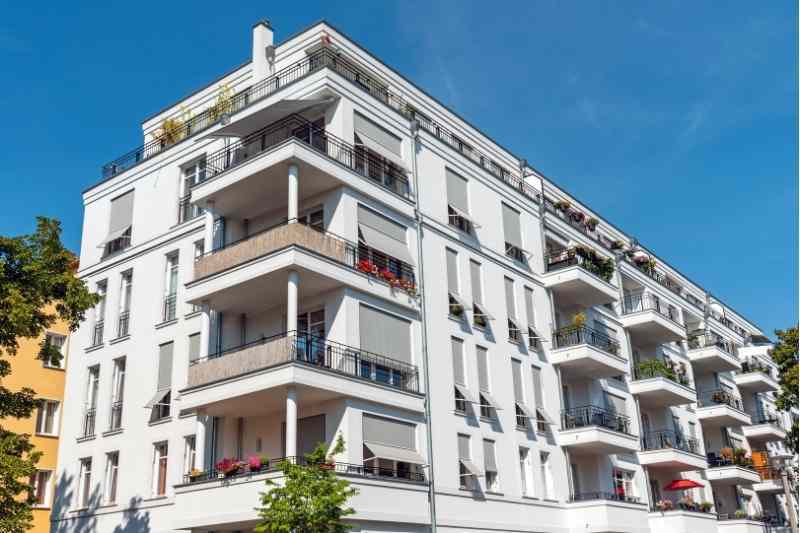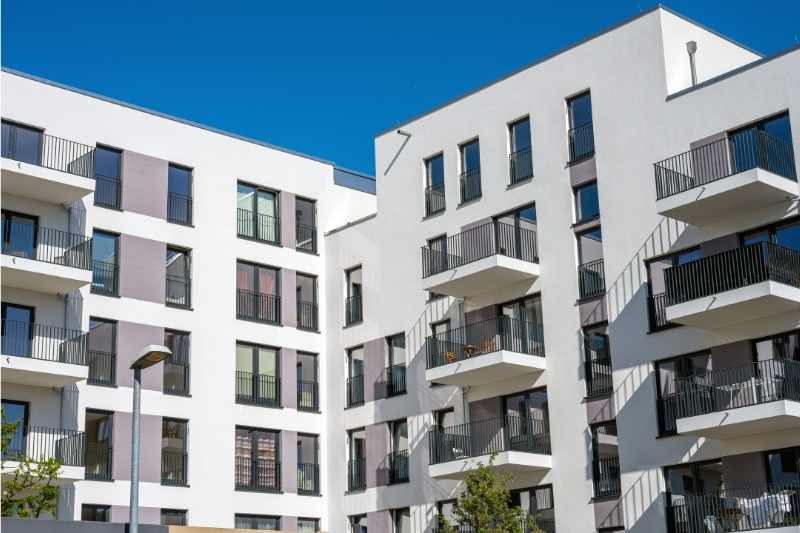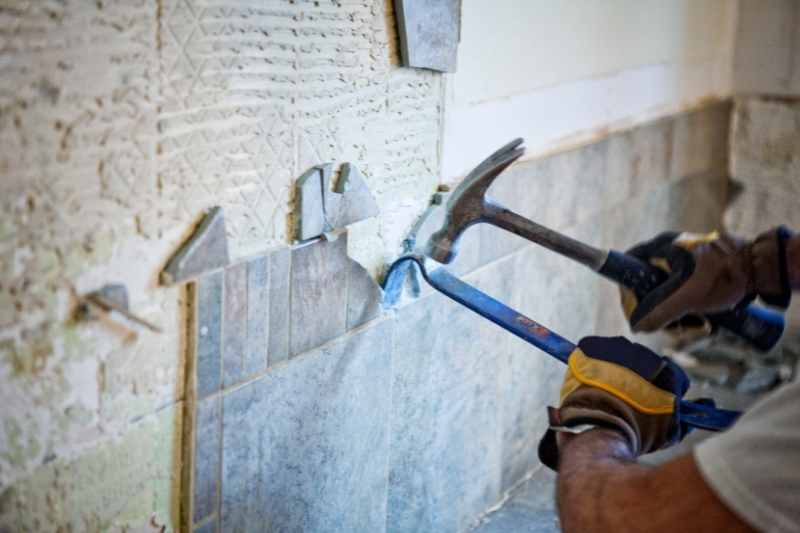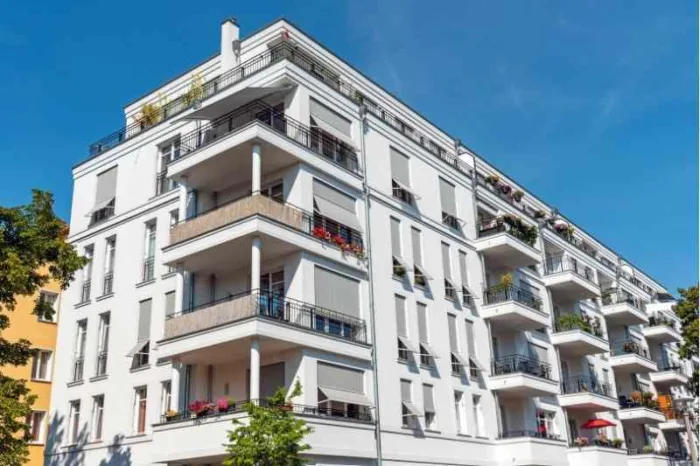Key takeaways:
- Investing in multifamily properties could be a good way to expand your real estate portfolio.
- Multifamily investment properties may appreciate over time. While the upfront costs are higher than single-family homes, they could be a better long-term investment.
- To analyze multifamily investment opportunities, consider the local real estate market and the building’s asset class.
- You can get started in multifamily investment in six steps: determining if you qualify to buy a multifamily property, finding a multifamily property, choosing a loan, making an offer, making necessary repairs and renovations, and creating a property management plan.

Disclaimer: This content is for informational purposes only, you should not construe any such information as legal, tax, investment, financial, or other advice. Nothing contained on our site constitutes a solicitation, recommendation, endorsement, or offer by ButterflyMX or any third-party service provider. ButterflyMX is not a financial adviser. You should always seek independent legal, financial, taxation, or other advice from a licensed professional.
Are you looking for a way to expand your real estate development portfolio through multifamily investment? You’re not alone! Investing in multifamily property can be incredibly profitable — if you approach it correctly.
Multifamily investment refers to buying multifamily properties like apartment complexes, condominiums, and student housing that offer multiple units for rent. Multifamily investments can improve your cash flow and typically offer a high net operating income. Because of this, it’s a popular option for real estate investors.
Read on for our complete guide to multifamily investment. First, we compare the potential of multifamily and single-family investment. Then, we walk you through how to analyze multifamily investment opportunities. Finally, we give you six steps to get started in multifamily investment.
This post covers:
- Single-family vs. multifamily investment
- How to analyze multifamily investment opportunities
- 6 steps to get started in multifamily investment

Single-family vs. multifamily investment
Multifamily investment properties differ from single-family properties because they require you to maintain properties with multiple rental units. Additionally, buying a multifamily investment property will require extra time, expenses, and overhead, such as large upfront and backend costs.
However, multifamily properties like apartments and condos may appreciate over time, possibly making them a lower long-term investment risk than single-family homes.
This is because multifamily properties offer multiple rental units, which multiplies your monthly revenue by several times. What’s more, renting out multiple units versus just one makes it easier to reduce vacancy rates, alleviate expenses, and offset investment risks.
Further, investing in multifamily properties may increase your return on investment and diversify your real estate portfolio. Overall, multifamily investment could be a better choice in the long run.
Additionally, if you’re concerned about whether you can afford to invest in a property on your own, you may enter a fractional ownership agreement. Fractional ownership in real estate involves various co-owners owning shares in a single real estate property.
Let’s take a look at the differences between single-family and multifamily investments:
Learn how to invest in multifamily real estate:
How to analyze multifamily investment opportunities
Factors like location, walkability, and local school rankings affect the earning potential and return on investment of your multifamily property. You can use these factors and more in order to use predictive analytics to make an informed choice concerning your investment. However, the local real estate market and the building’s asset class are also important considerations.
Local real estate market
The local real estate market determines how easy it will be to find renters. Major cities with consistent job growth like New York City or Los Angeles have more prospects than small cities with limited job opportunities.
But remember, many cities are considered growth markets. This means that, while they may not have a historically booming rental market, local job growth, a steadily growing population, and new business districts make them good markets to build wealth over time.
Here are growth market cities with the highest potential for multifamily investment:
- Minneapolis-St. Paul, MN
- Seattle, WA
- Austin, TX
- San Diego, CA
- Boston, MA
- Portland, OR
- San Francisco, CA
- Raleigh, NC
- Phoenix, AZ
- Jacksonville, FL

Asset class
Also important to consider is the asset class of the building itself. While the lines between each class are subjective, there are three major classes: A, B, and C.
Let’s take a closer look at the differences between Class A, B, and C buildings:
What is a good ROI for multifamily?
A good return on investment (ROI) for multifamily investment could be between 14% and 18%. Factors like the local real estate market and asset class will affect this.
For example, if you invest in a growth market, your initial ROI will be on the lower end. Additionally, your return may be lower if you invest in high-asset class buildings because they’re low-risk investments and have little potential for appreciation.
To find a property’s potential ROI, you can use its multifamily cap rate. This is a measure of the relationship between its NOI and the property value.
Watch this guide to calculating how much to charge for rent:
6 steps to get started in multifamily investment
So, you’ve decided multifamily investment is the path for you. But how do you go about buying multifamily properties to rent out? There are six primary steps in the multifamily real estate investing process, which we cover below.
Six steps of the multifamily real estate investing process:
- Determine if you qualify to buy a multifamily property
- Find a multifamily property
- Choose a loan
- Make an offer
- Make repairs and renovate
- Create a property management plan

1. Determine if you qualify to buy a multifamily property
Before you jump into your multifamily investment strategy, you must find out if you qualify for a multifamily property mortgage.
As expected, down payments for multifamily properties are higher than for single-family homes. On average, you’ll have to pay around 20% on a down payment, depending on the market and the building size.
The cost of a multifamily property can range from the hundreds of thousands well into millions of dollars. However, banks are more likely to provide loans with good interest rates to multifamily investors than single-family investors. This is because multifamily real estate generates a strong, consistent cash flow each month.
Additionally, consider your debt-to-income (DTI) ratio. Unless you have millions of dollars in cash, you’re going to incur some debt during the investment process. The key is to keep your DTI below 40%.
To determine your DTI, measure the amount of monthly debt against your gross monthly income. The lower your DTI, the more likely you are to secure loans from lenders.
So, if you have a firm management plan in place, a low DTI, and the financial wherewithal to cover a down payment, you likely qualify to purchase a multifamily property.
Pro tip: If you aren’t yet able to purchase a multi-tenant property, consider getting your start by investing in multifamily REITs.
2. Find a multifamily property
First, determine which typeof multifamily property you’re interested in.
You’ve got a lot of options, including:
- Mid- and high-rise apartments
- Senior housing
- Student housing
- Garden-style apartments
- Gated communities
From there, location is one of the most important parts of choosing a multifamily investment property. You must consider the local real estate market, neighborhoods, local attractions, and even school districts. While investing in an up-and-coming market might turn out to be a great investment, you need a combination of several long-term attractions that will attract high-quality tenants.
In order to determine the best city for high-return multifamily investment, consider local median property price, population growth, job growth, and median rent.
Because of this, it’s best to partner with a local real estate agent who knows the market, understands the dynamics of the multifamily industry, and is knowledgeable about local rental trends. They’ll help you determine which neighborhoods have the most investment potential and signal whether a property’s priced appropriately.
Of course, you should also do your own research, especially if you’re unfamiliar with the area you’ve chosen to purchase property. Visiting the area on your own will give you a sense of the feel and character of the neighborhood. What’s more, it’ll also prevent you from purchasing a property in an unfit location. For best results, consider using real estate investment software.
3. Choose a loan
Building a successful real estate development portfolio isn’t just about finding the right property — you also have to secure the best loan program and provider.
You must consider interest rates, your cash flow, and how your assets will fit into your investment portfolio.
Conventional mortgages are the most popular choice for multifamily properties with more than two units. However, if you choose to live in one of your rental units, you may qualify for a Federal Housing Administration (FHA) or a Veterans Affairs (VA) loan.
4. Make an offer
Once you’ve got financing secured, you’re ready to make an offer on your property!
Having a local real estate agent in your corner during this step is key. Not only will they offer pertinent advice and insight, but they’ll also act as a mediator between you and your selling agent. Before they meet with the selling agent, determine your budget — specifically the biggest offer you can make.
Your real estate agent and the selling agent will discuss specifics during their meeting. While your offer may be accepted right away, the selling agent may make a counteroffer. In that case, you’ll go through several rounds of negotiating before the seller accepts your offer.
Once your offer is accepted, you can move forward with the closing process. During this time, you should purchase insurance, arrange for a property inspection, and handle closing costs.

5. Make repairs and renovate
Now that you’ve invested in your multifamily property, it’s time to prepare for tenants! While there may be residents already living in your building, you should still determine what renovations and repairs are necessary to create the best possible environment for your tenants.
It’s paramount that you ensure your building adheres to local building codes. Additionally, consider the repair suggestions from your property inspection. These should be completed before you consider cosmetic renovations.
Cosmetic renovations include things like:
- Light fixtures
- Paint colors
- Crown molding
- Tiling
- Kitchen upgrades
These upgrades will not only help you attract new tenants — especially young renters focused on aesthetics — but they’ll also allow you to increase your rent. This will help you maximize your net operating income.
While doing initial repairs, you’ll have a chance to create a general maintenance plan. This way, you’ll know how to handle resident maintenance requests in addition to regular maintenance.
6. Create a property management plan
As important as the multifamily investment process is, the real work begins afterward.
When creating a property management plan, you must decide how involved you’ll be in the day-to-day operations. This includes daily management tasks as well as marketing the property to prospective residents.
Decide how much time you’re willing to commit to running your multifamily property and create a property management budget. Once these two things are set, you can hire appropriate property staff, cover property operating costs, and manage your multifamily investment with ease.






